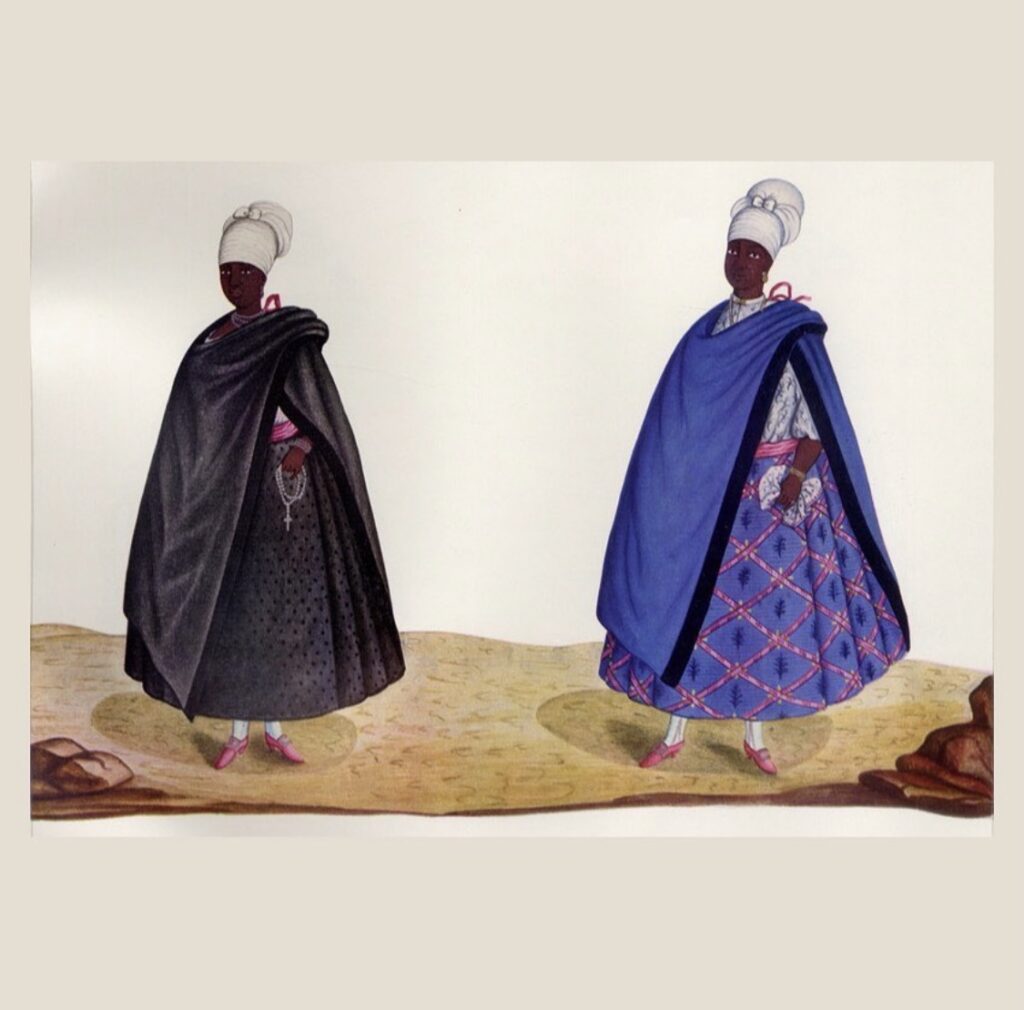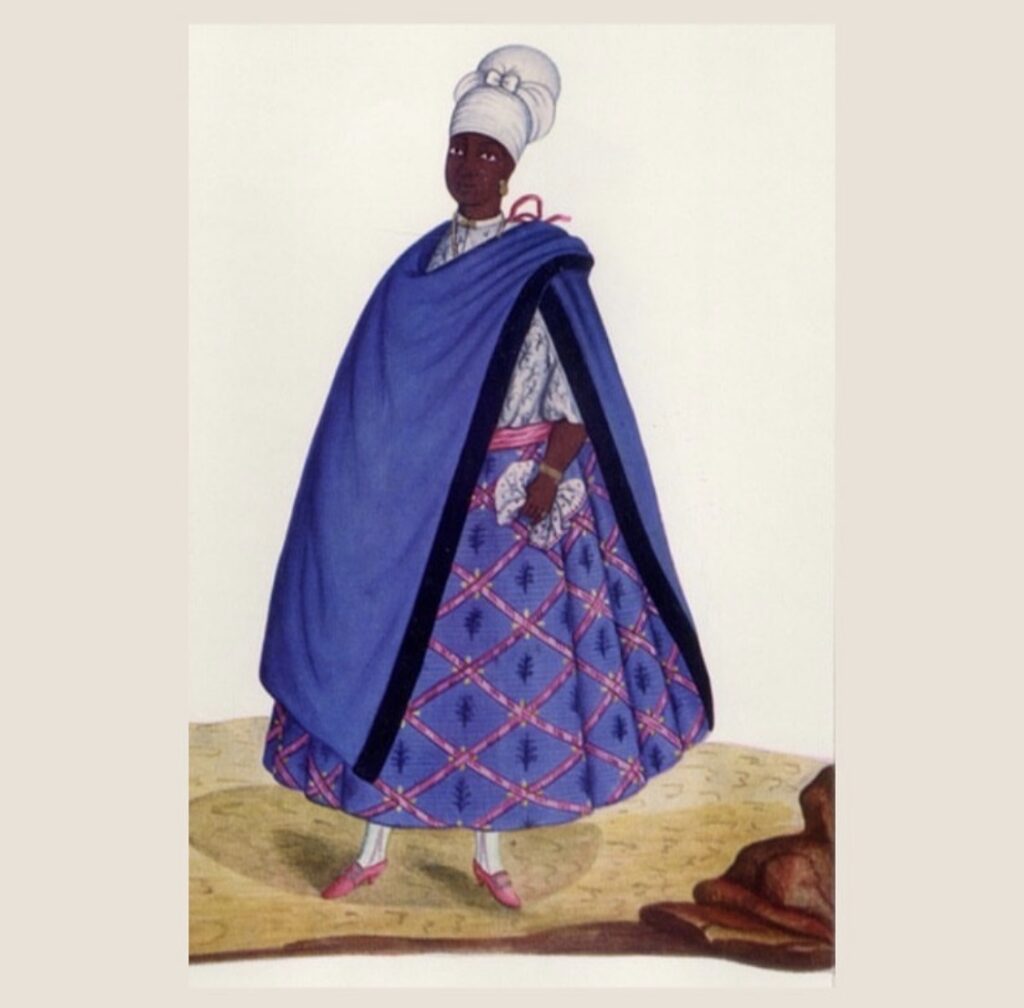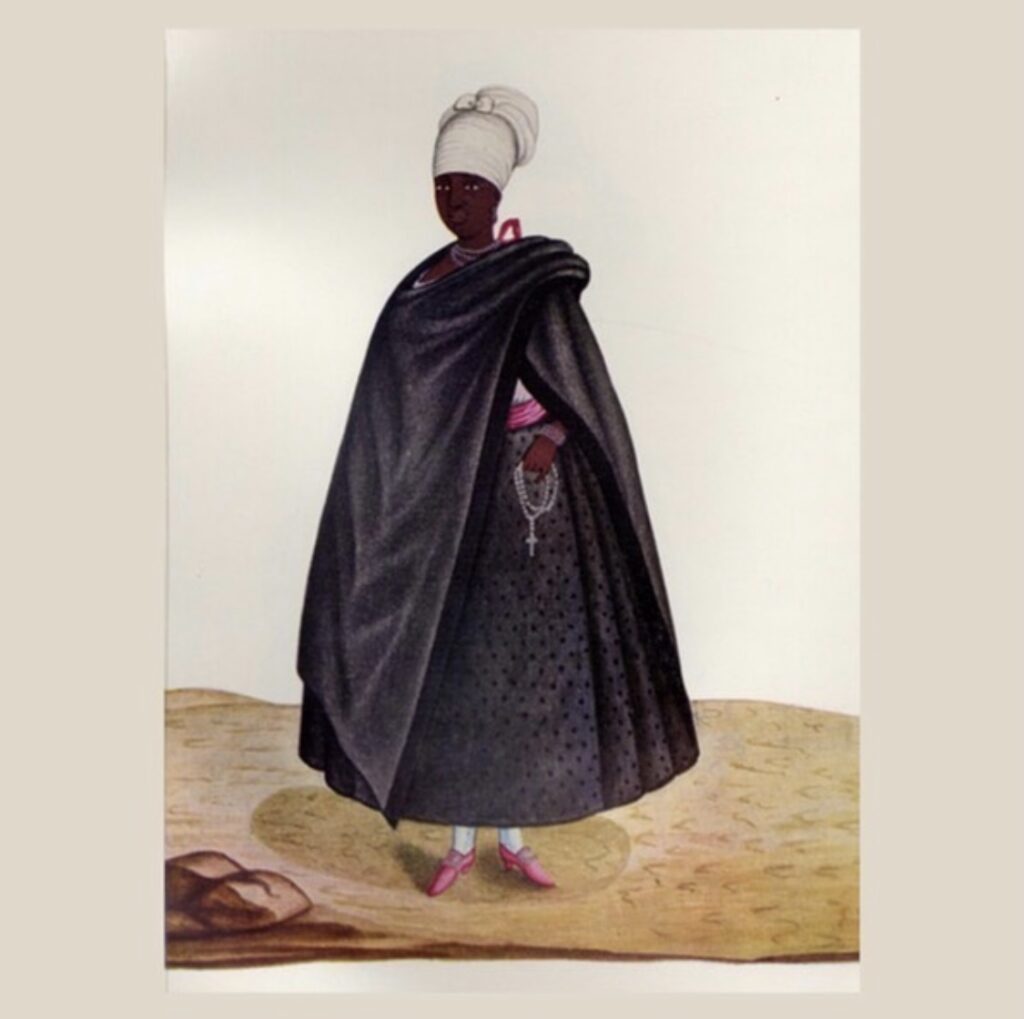
Source
Rights
Description
This is an illustration of two women of Río de Janeiro, Brazil in circa the late eighteenth-century. The artist takes careful detail to their dress. Gold drips from their ears and they wear beads on their neck & hold a rosary in hand. They could very well be practitioners of Candomblé, a syncretic Afro-Brazilian religión. Although the two women are identified with Rio, the roundness of the skirt resembles that of the present-day dress of the women of Salavador in the Brazilian state of Bahia. This is where it is said that Candomblé was formated. “Religious contemporary dress worn in Candomblé retains traces of a hybrid colonial style that incorporated elements from Europe, Brazil, and Africa. Through its attachment to the past, dress helps Candomblé practitioners perform choreographies that reenact orixás’ mythological stories and telegraph meaning to practitioners and the audience” (2014).

Black women dress in their typical Baiana costume and work on the streets of Salvador serve to preserve the memory of the working women that have inhabited that space since the colonial times. — This is one of 43 watercolors in Luso-Italian artist (and colonial official for the Portuguese empire) Carlos Julião’s manuscript titled “Riscos Iluminados de Figurinhos de Negros e Brancos dos Uzos do Rio de Janeiro e Serro Frio” [Illuminated Sketches of Black and White Figures from Uzos of Rio de Janeiro and Serro Frio.” This late eighteenth-century manuscript (published in 1960 by the National Library of Rio de Janeiro) contains various ethnographies of people residing in colonial India, Peru, and Brazil.

Sources:
Silvia Hunold Lara, Customs and Costumes: Carlos Juliao and the Image of Black Slaves in Late Eighteenth-Century Brazil, 2002.
Paula Pereira Lima, Candomblé and Its Living Garments, 2014.

